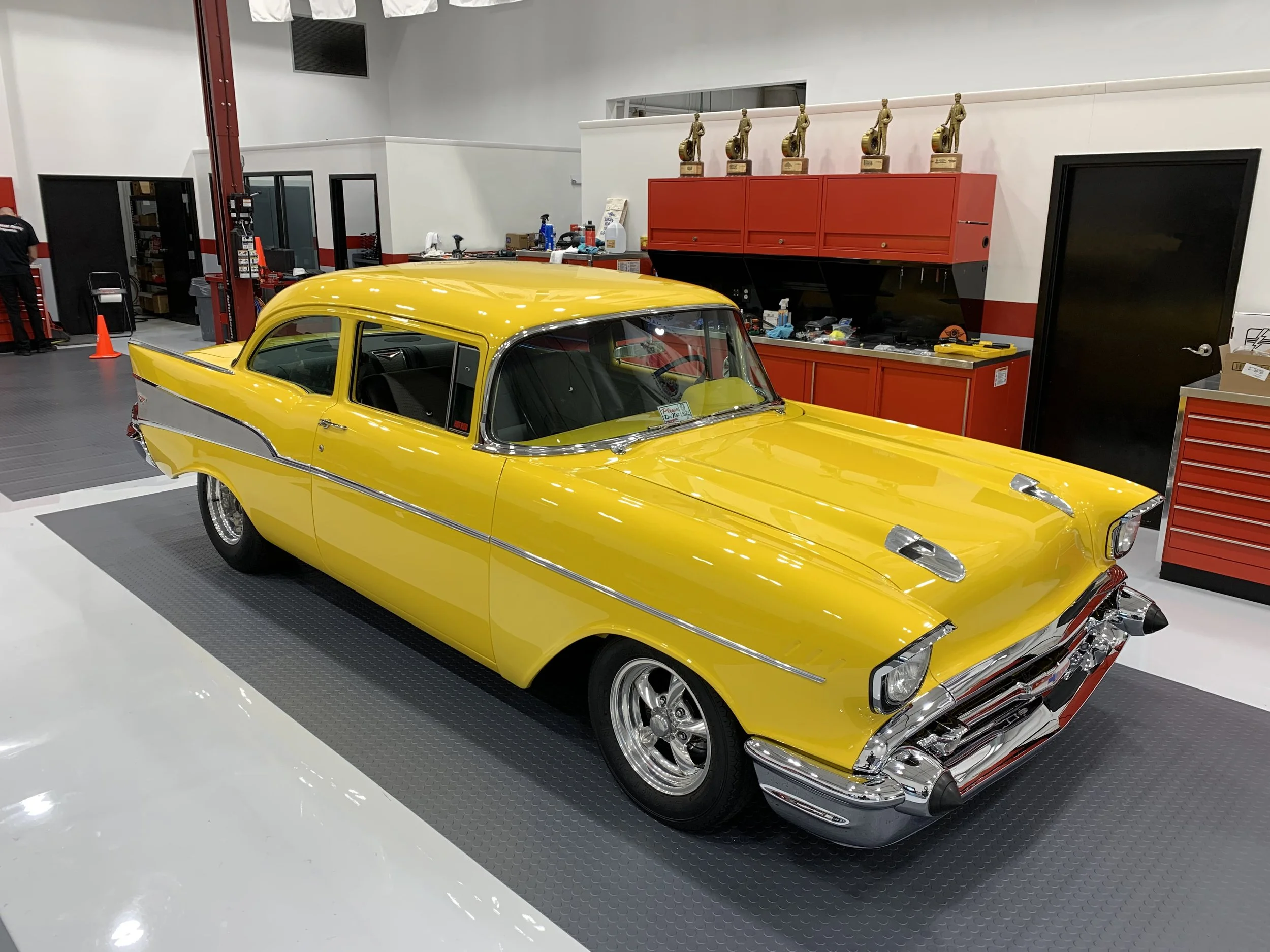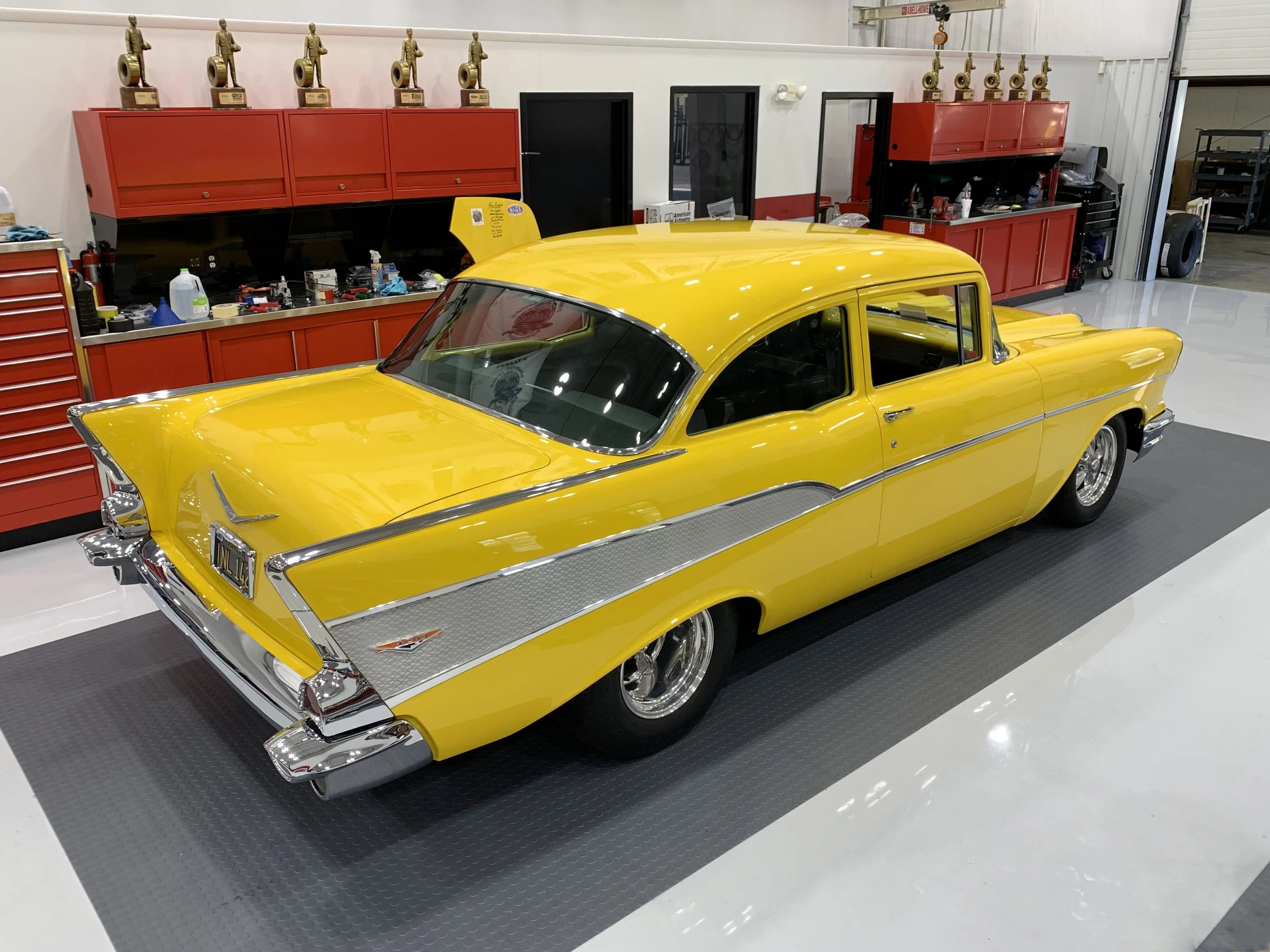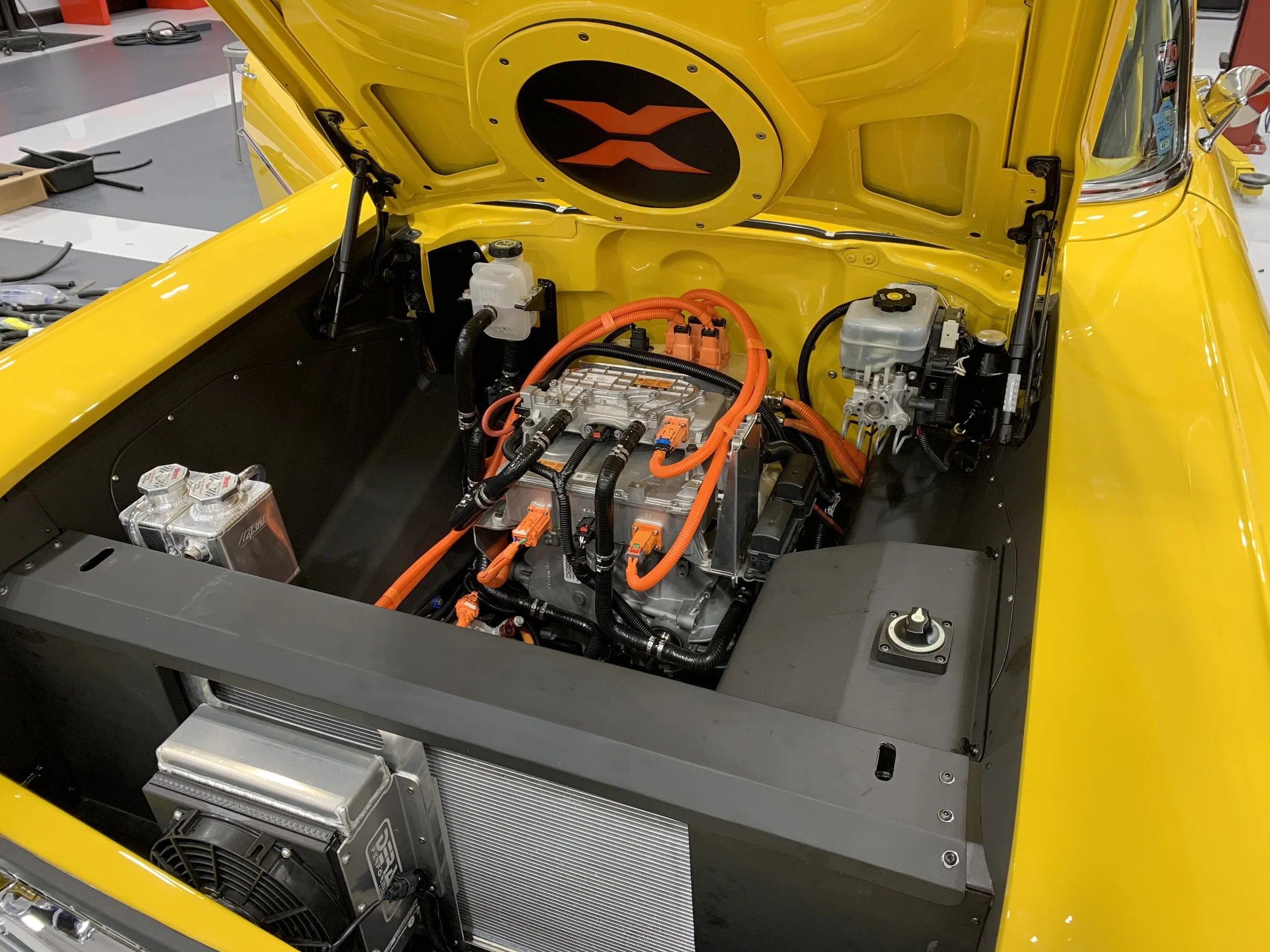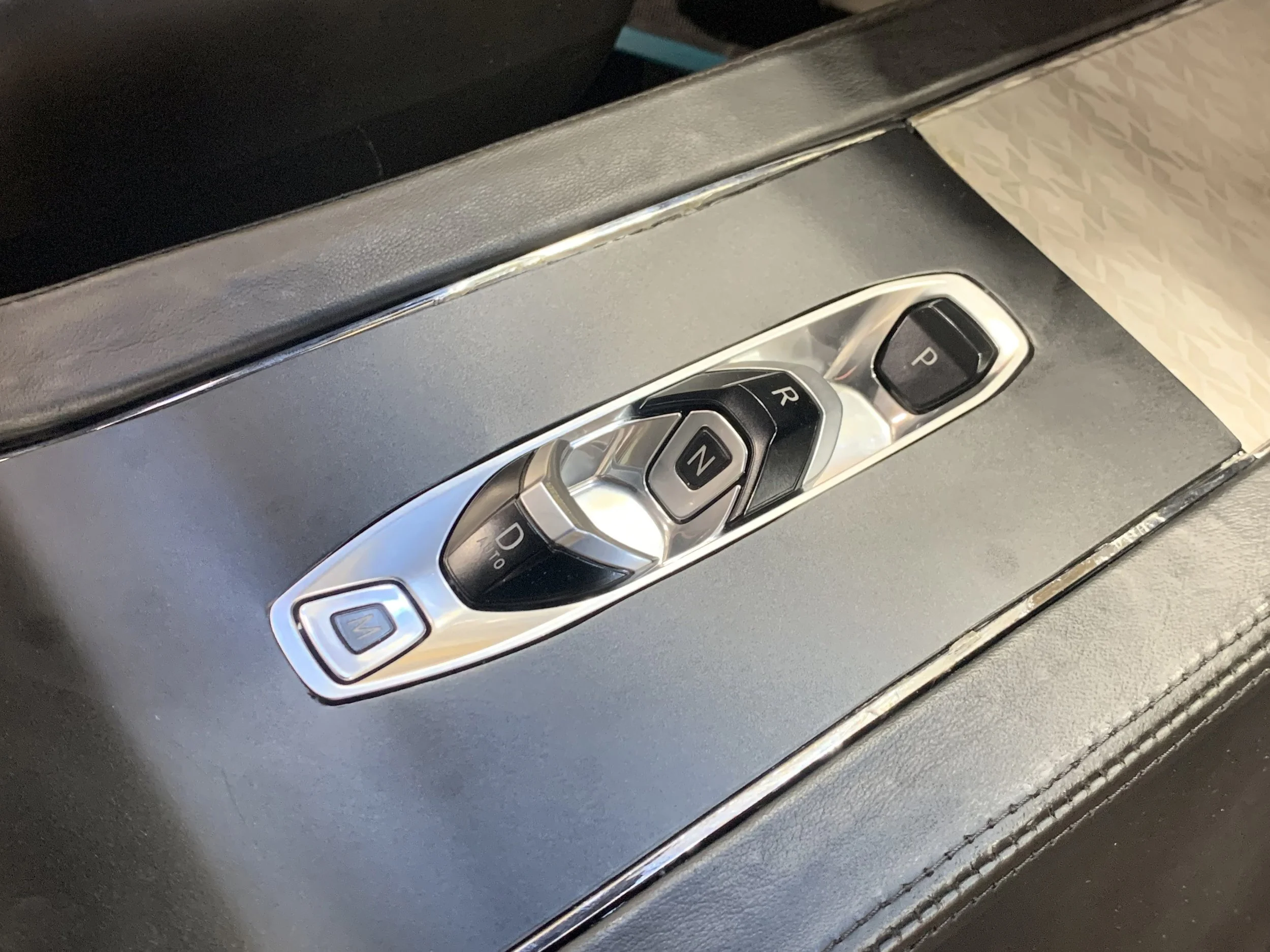Detroit Acknowledges the EV Restomod Market at SEMA 2021
By Edward A. Sanchez – Nov. 3, 2021
Until recently, the predictable, reliable, and proven formula for thousands of performance enthusiasts looking to update their car’s performance was to slot in a tried-and-true GM “LS” V-8 engine and call it a day. There’s nothing wrong with taking that well-traveled path, but once you’ve tasted the instantaneous response and torque of electric motors, it’s hard not to think about how to adapt modern EV power to vintage iron.
It seems Detroit has gotten the same bee in their bonnets for performance modifications and upgrades, if the latest show cars from General Motors and Ford are any indication. Both have taken drivetrain technology from some of their newer EVs and adapted them to classic, iconic models from their history.
In GM’s case, the company repurposed a long-running 1957 Chevrolet project car that had been used for decades by Hot Rod magazine for dozens of different tech articles and features over the years, with the most recent modification being the installation of a supercharged LSX crate engine. For this year’s SEMA show, that showcase of traditional Detroit muscle is being unceremoniously jettisoned in favor of electric power. In its place is a 340 hp, 330 lb-ft electric motor, and a 30 kWh battery pack, described as “providing enough range for weekend cruising.”
(Images courtesy Chevrolet)
Ford’s approach cranks up the muscle a bit more with its 1978 F-100 Eluminator. The truck features a dual-motor setup from the Mustang Mach-E GT, giving the truck a total of 480 hp and 634 lb-ft of torque. A battery capacity for the concept was not given in the announcement. But the concept is a showcase for its new Eluminator EV crate motor, which will retail for a very reasonable $3,900. This is nearly a third of the price of a typical new crate motor, making it a compelling value. However, that doesn’t take into account the battery, power electronics, and other related hardware and components necessary to make a properly functioning EV.
(Images courtesy Ford)
Companies like Holley and its newly acquired subsidiary AEM are working on products to help with powertrain and control integration, as we took a look at earlier this year with AEM’s Tesla-swapped S197 Mustang.
As I’ve noted on this blog, I’ve fantasized about what I’d someday like to do with my 1983 Buick Regal wagon. Since I don’t have a multi-acre estate, a garage equipped with a lift, and hundreds of thousands of dollars worth of specialized tools, of course this endeavor would require giving the job to a shop with an hourly labor rate of over $100 an hour. I got a quote to do an LS swap the right way, and came back with an eye-watering quote of $60,000.
A similar restomod conversion for an EV powertrain would likely run into the low-to-mid six-figures, so we’re still not at cost-parity on doing an EV versus ICE conversion. But I have no doubt that day will eventually come, and possibly to the point where EV conversions are actually slightly cheaper than all-inclusive LS swaps.
It still boils down to supply-and-demand. There are millions of “LS” engines out there in salvage yards across the country, being the bread-and-butter engine in GM full size trucks since 1999, as well as being widely offered in the Chevy Camaro, Corvette, and other lower-volume variants.
The Tesla Model S, on the other hand, is a relative exotic. Cumulatively, an estimated 300,000 units have been sold to date. How many of those drive units have been removed from the car and are in good operational condition is unknown. However, Model S drive units sell for between $6,000-$13,000 on eBay, depending on condition, mileage, and specs. They are a hot commodity, and will likely continue to be.
Those curious or eager to do an EV restomod on their vintage ride should be cheering the tsunami of EVs coming to market, as ultimately, a lot of those components will find their way to the salvage market, giving many more powertrain options, as well as the growing aftermarket support from companies like Holley and others. We’re cheered to see the OEMs recognize and embrace the EV restomod trend, and hope that support continues and grows.
(Main image courtesy Ford)
- Podcast - Facebook - Google News - Twitter -















